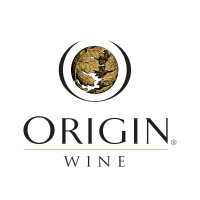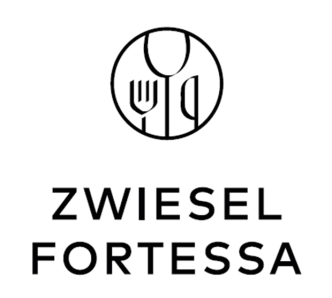How does a yeast like Lachancea thermotolerans, which can boost acidity in wines in warmer regions/vintages, impact Oenococcus oeni, the primary lactic acid bacterium used in malolactic fermentation (MLF)?
A study in Australia, published by our friends at OENO One, examined the impact of sequential cultures of Lachancea thermotolerans and Saccharomyces cerevisiae on MLF performance in white and red wines.Four L. thermotolerans strains were tested in Sauvignon Blanc with sequential S. cerevisiae inoculation, compared to an S. cerevisiae control and the initially un-inoculated treatments. The L. thermotolerans wines showed large differences in acidification, and progression of MLF depended on lactic acid production, even at controlled pH. The highest and lowest lactic acid producing strains were tested further in Merlot fermentations with both co-inoculated and sequentially inoculated Oenococcus oeni. The low lactic acid producing strain (Concerto from CHR Hansen, Denmark) enabled successful MLF, even when this failed in the S. cerevisiae treatment, with dramatically quicker malic acid depletion in O. oeni co-inoculation than in sequential inoculation. In contrast, a high lactic acid producing strain (UNIFIG18) inhibited MLF irrespective of the O. oeni inoculation strategy. In a follow-up experiment, increasing concentrations of exogenously added lactic acid slowed MLF and reduced O. oeni growth across different matrices, with 6g/L of lactic acid completely inhibiting MLF. The results suggest that high lactic acid producing strains of L. thermotolerans could be used to inhibit MLF, while lower lactic acid producing strains could promote it.
What’s the impact of non-Saccharomyces on MLF?
Since malolactic conversion is usually performed after alcoholic fermentation, MLF is highly influenced by the metabolism of the yeasts that turned the must into wine. Increasingly, non-Saccharomyces yeasts are used as starters.Researchers at the Universitat Rovira i Virgili in Spain tested the oenological impact of sequential alcoholic fermentation with two non-Saccharomyces – Torulaspora delbrueckii and Metschnikowia pulcherrima – with Saccharomyces cerevisiae on the MLF. Grape musts of Macabeu and Cabernet Sauvignon from the 2018 vintage were inoculated with the two non-Saccharomyces. After 48 hours, the fermenting musts were inoculated with S. cerevisiae. Musts inoculated with only S. cerevisiae were used as control.
After fermentation, wines were racked and stabilised at 7°C for a week. Two Oenococcus oeni strains were then used to perform MLF, while another sample was allowed to start MLF spontaneously.
The resulting wines were generally similar from a chemical point of view, with the ones fermented with T. delbrueckii the most different. In all the alcoholic fermentations, the non-Saccharomyces imposition was >90% at 48 hours but at the end of it, S. cerevisiae was the sole dominant species.
'MLF was highly influenced by both the alcoholic fermentation strategy and the strain of Oenococcus oeni'The researchers Aitor Balmaseda, Nicolas Rozès, Albert Bordons, and Cristina Reguant found:
- The MLF finished earlier when a non-Saccharomyces yeast initiated the fermentation.
- All MLF finished in less than 8 days with the exception of the spontaneous one in S. cerevisiae wine (17 days).
- Overall, the inoculated MLF were quicker than the spontaneous MLF, apart from an inoculated Oenococcus oeni strain in M. pulcherrima wine.
- Citric acid was completely consumed after MLF except in the spontaneous MLF of S. cerevisiae wine.
- According to the volatile analyses, the fermentation with T. delbrueckii led to a reduction of medium-chain fatty acid concentration.
- The sensorial analyses showed that the lactic character was highly noticed by the testers in the spontaneous MLF, especially the wine fermented with M. pulcherrima.
A similar study on Nebbiolo in Italy, using the non-Saccharomyces yeast Starmerella bacillaris (aka Candida zemplinina)* and Saccharomyces cerevisiae starter cultures and then Lactobacillus plantarum and Oenococcus oeni to induce MLF found:
- MLF in which L. plantarum was inoculated at the beginning of the fermentation were completed faster than those inoculated with O. oeni.
- When L. plantarum was inoculated at the end of alcoholic fermentation, a stuck MLF was observed, while O. oeni completed MLF successfully.
- The presence of Starm. bacillaris in mixed fermentations promoted O. oeni growth and increased malic acid consumption rate.
- Analysis from volatile composition showed that LAB species selection had a greater impact on the wines’ aroma profile than inoculation time.
Is there an alternative to Oenococcus oeni?
While Oenococcus oeni is generally the bacterium of choice for MLF, there is growing interest in other species, such as Lactobacillus. However, Lactobacilli are more sensitive to low pH and SO2, and producers of starters generally have to inoculate high doses of non-growing bacteria in grape musts.Researchers from the Universitat de València in Spain have shown it’s possible to grow 12 selected strains of Lactobacillus in fermenting grape juice. All Lactobacillus strains gradually adapted to the lowering of pH to 3.2 and the increasing concentration of SO2, and went on to complete MLF in seven days.
Depending on the strain, the final pH of wines was maintained or even decreased (producing lactic acid from sugars) – even when complete MLF was achieved. “This strategy helps in biological acidification of wines against the loss of acidity derived from climate change,” say the study’s authors, Sergi Ferrer, Lucía Polo, Lorena Andrés, and Isabel Pardo.
They also say the Lactobacilli produced more complex wines, and prevented the spoilage of an undesired late MLF in bottles.
What happens if you inoculate with Lactobacillus plantarum or Oenococcus oeni and Saccharomyces cerevisiae?
A study at the University Rovira i Virgili in Spain examined the influence of co-inoculation of Lactobacillus plantarum or Oenococcus oeni and Saccharomyces cerevisiae on the colour and composition of Tempranillo wines. They compared it with sequential inoculation with Oenococcus oeni and spontaneous MLF.After harvesting about 1,500kg of Tempranillo grapes from the Pagos de Anguix winery in AOC Ribera de Duero, the grapes were destemmed, crushed and placed in 12 x 200L tanks to perform four different experimental conditions by triplicate. Three tanks were co-inoculated with O. Oeni and S. cerevisiae, three with L. plantarum and S. cerevisiae whereas the other 6 tanks were inoculated only with the same strain of S. cerevisiae. Once alcoholic fermentation was finished, three of these tanks were inoculated with O. oeni while the other three were maintained for spontaneous MLF.
Once MLF had finished, all the wines were sulphited and racked to 100L plastic tanks (Flexcube, Quilinox) with oxygen permeability similar to oak barrels. Two months later the wines were analysed and tasted by a trained panel.
The study found:
- All the wines submitted to co-inoculation finished MLF at the same time as alcoholic fermentation.
- Wines submitted to sequential inoculation finished MLF around 20 days later while wines submitted to spontaneous MLF needed around 40 days.
- All co-inoculated wines had significantly higher titratable acidity and lactic acid concentration, especially those co-inoculated with L. plantarum, than wines from sequential inoculation or spontaneous MLF.
- All the wines from co-inoculation had more intense colour and higher total phenolic index than the other wines.













.png)






